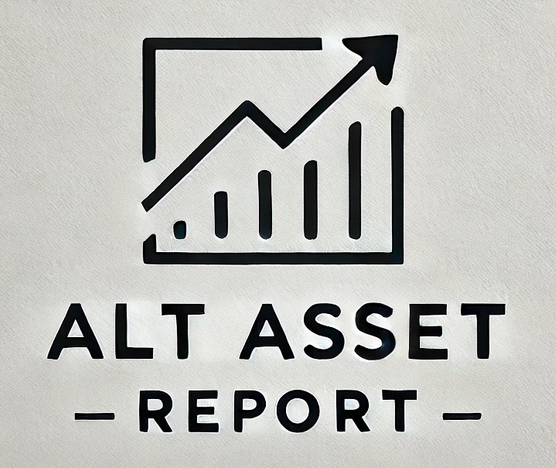Alt Asset Report #003 - Fine Art

Overview
- An integral part of human history, with evidence of artistic expression by human beings dating back to prehistoric times.
- National Institute of Health: The earliest known evidence of ‘artistic behavior’ is of human body decoration, including skin coloring with ochre and the use of beads, although both may have had functional origins.
- Made primarily for aesthetics or creative expression, rather than function.
- There are 5 historical arts (painting, sculpting, architecture, music, poetry)
- The focus of this report will be
- Paintings
- Sculptures
Investment Hypothesis
- One of the oldest assets classes in the world, directly connected to human history and progress
- Fast growth in China and India, the world’s two largest countries by population
- Creates an emotional reaction when consumed
- Mature as an asset class, with both traditional and new investment opportunities
Investment Factors
- What makes art valuable?
- Historical significance
- Art that details a specific event or was created during a certain period of importance
- Provenance
- Lineage of the artwork’s owners
- Intrinsic value - how it makes you feel
- Historical significance
Bull Trends
- Price have low correlation with stocks and bonds making it a strong diversification asset
- Strong hedge against inflation
- Even when hard to sell, art can be used as collateral to support loans for big-ticket items
- AI may make older, more traditional art even more attractive/valuable
- The rise of the Chinese art market into the second largest in the world
- Continued move to an online world for finding and buying art
- According to Vincent “Only five of the 200 most valuable works of art have been created by non-European or North-American artists.”
Bear Trends
- Bubble appear frequently and in unpredictable sub-markets of the art world
- It has been studied a lot
- AI may flood the market and bring down prices
- AI may make replicas that are indistinguishable from originals, diminishing values
- There are always new trends and styles to compete for investment dollars
- Value is tied to few, specific individuals creating more risk in each one
Marketplaces
- ArtPal - Marketplace for individuals to buy and sell art pieces
- Sotheby’s - Sell art on consignment and bid on auctions
- M.S. Rau - Large art gallery in New Orleans with paintings for sale
- Zatista - Buy original, one-of-a-kind artwork
- ArtSpace Warehouse - Contemporary art, representing abstract, landscape, urban, pop, street art, photography, and sculptures.
- Rise Art - Contemporary paintings available for sale or rent
- Society6 - Buy prints and posters
- Fine Art America - Buy and sell art prints
- Masterworks - Buy shares in actual art pieces
- Artplode - Deal directly with buyers and sellers, no commission charged. $60 fee to list
- Saatchi Art - Online, curated art gallery
- Art Brokerage - Buy and sell artwork to over 250,000 members
- Artsy - Hand-curated selection of artwork for sale
- Artspace - Contemporary art for sale from marque artists
- Artspan - Buy affordable art directly from artists
Investment Types
- Collector Expenditures by Art Medium
- 58% - Paintings
- 13% - Works on paper
- 8% - Installations
- 8% - Sculptures
- 6% - Prints/multiples
- 3% - Digital art
- 2% - Photography
- 2% - Film or video art
- Individual pieces
- Art funds
- Fractional shares
- Digital art - NFTs and similar works
Investment Guides
- UBS - The Art Basel and UBS Global Art Market Report 2024
- Market Decline: The global art market fell by 4% to $65 billion in 2023, mainly due to economic instability and a drop in high-end sales, though it stayed above pre-pandemic levels.
- Online Growth: Online art sales rose by 7% to $11.8 billion, making up 18% of the market, showing the sustained role of digital platforms even as live events returned.
- China's Rise: China became the second-largest art market, with sales up 9% to $12.2 billion, driven by post-lockdown demand, though momentum slowed in the year's second half.
- Independent - The New York Art Market Report
- New York’s Dominance: New York accounts for 90% of the U.S. art market by value and remains the global art hub due to its wealth base, cultural infrastructure, and strong legal framework.
- Collector Behavior: New York collectors, largely driven by passion and philanthropy, spend an average of $759,000 annually on art, with most transactions under $50,000.
- Bank of America - Art market update: Searching for terra firma
- Landing: Following 2021 exuberance, the market is still correcting.
- Buyers: Art buyers continue to expect lower prices at auctions and galleries.
- Sellers: Continue to hold off on discretionary selling until demand regains its prior price elasticity.
- The Motley Fool - Investing in Art Stocks
- Invest in fine art if:
- You have a passion and appreciation for art and are willing to do research.
- You have an established portfolio of other investments and re looking to diversify your portfolio.
- You have high risk tolerance.
- You’re willing to own a piece of art indefinitely.
- You can afford the maintenance and insurance for the pieces you do acquire.
- Invest in fine art if:
Industry Sources
- Apollo - international art magazine
- Aether Magazine - Spotlight the work of emerging talent from marginalized backgrounds
- Flash Art - Contemporary art bi-monthly
- Nuda Paper - Biannual hardcover exploring the worlds of art, fashion, design, philosophy and science
- Artsy - Pricing guide with auction records from over 300,000 artists
- Art Business News - Comprehensive coverage of the art business for 45 years
